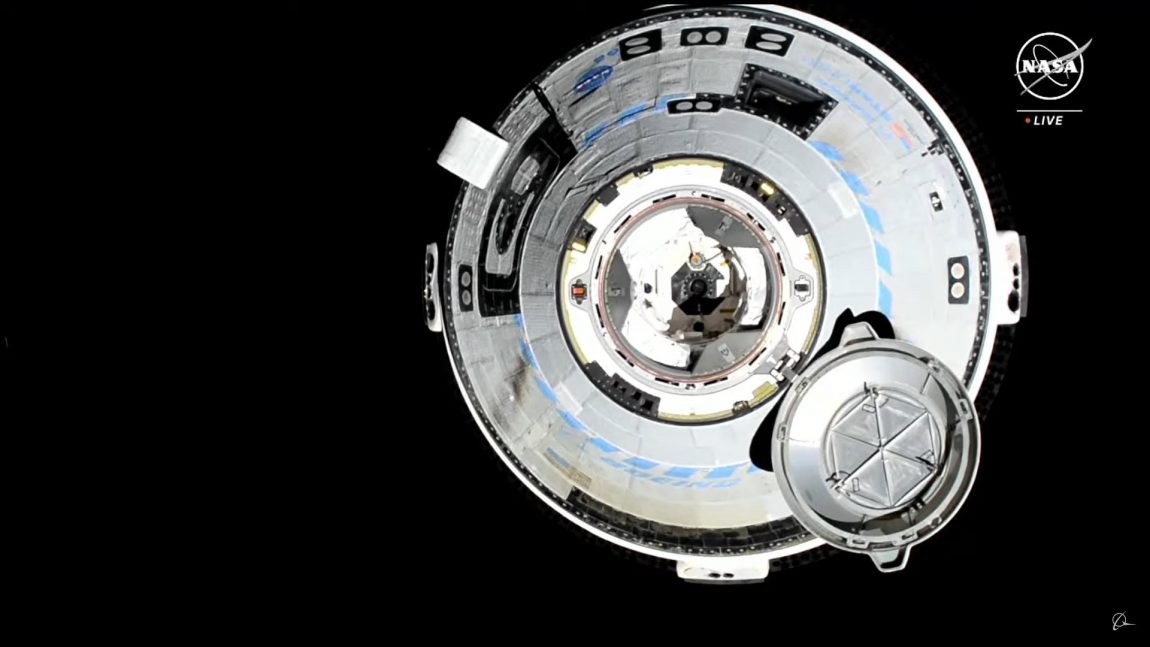
Boeing’s Historic First Crewed Launch with NASA
Recommended for Middle Grades
Hold onto your helmets, space enthusiasts! Boeing, after years of delays and technical hiccups, has finally joined SpaceX in the exciting “astronaut taxi” business, launching NASA astronauts into orbit for the first time.
Imagine this: NASA (National Aeronautics and Space Agency) is hiring private companies like Boeing and SpaceX to shuttle their astronauts to and from the International Space Station (ISS), a giant orbiting laboratory where scientists conduct all sorts of cool experiments. It’s like a cosmic carpool, but way cooler!
Veteran NASA astronauts Butch Wilmore and Suni Williams, a seasoned duo with a combined 490 days in space under their belts, are making history as the first crew to fly aboard the Starliner capsule.
This sleek, state-of-the-art spacecraft is Boeing’s answer to SpaceX’s Crew Dragon, designed to ferry astronauts safely to and from the ISS.
This isn’t just another space launch; it’s a major milestone for Boeing, proving that their capsule can safely transport humans to this incredible floating lab in the sky. Talk about a nail-biting debut!
Key Facts: A Bumpy Ride to the Stars
-
May 6, 2024:
- The initial launch attempt was scrubbed just hours before liftoff due to a pesky valve issue on the Atlas V rocket. Imagine a tiny, but crucial, part of the rocket’s plumbing acting up – that’s what a valve issue is like. It’s a small problem that can cause big delays! Talk about a last-minute surprise for the eager astronauts and ground crew.
-
Further Delays:
- As if that wasn’t enough, a small helium leak was discovered in Starliner’s propulsion system, the part responsible for pushing the spacecraft through the vastness of space. It’s like finding a tiny hole in a balloon – it might not seem like much, but it can cause the whole thing to deflate, so the launch had to be postponed again.
-
June 1, 2024: Another attempt, another setback.
- This time, a computer glitch on the Atlas V, the Starliner’s trusty steed, triggered an automatic abort with just minutes to spare. The computer, like a cautious parent, sensed something wasn’t quite right and stopped the launch for safety. The tension was palpable as everyone held their breath, hoping for a better outcome next time.
-
June 5, 2024: Success!
- Third time’s the charm, as they say. The Starliner finally blasted off, carrying Butch and Suni on their historic journey. The cheers erupted, the rocket soared into the sky, and a new chapter in space exploration began.
-
Mission Accomplished:
- The capsule successfully docked with the ISS on June 6th, a moment of triumph and relief. The astronauts could finally begin their scientific research and enjoy the breathtaking views from the space station.
This launch wasn’t just about overcoming technical challenges; it was a testament to the unwavering determination of the engineers, astronauts, and everyone involved in the Starliner program.
They faced setbacks, learned from them, and ultimately triumphed, proving that the human spirit of exploration knows no bounds. It’s a reminder that even the most complex endeavors can be achieved with perseverance and a little bit of luck.
A New Era of Space Travel & Cultural Significance
This successful launch marks a new chapter in crewed spaceflight, with Boeing joining SpaceX as a reliable option for transporting astronauts to and from the ISS. It’s a win for competition, innovation, and the future of space exploration.
With two U.S. companies now capable of crewed missions, we can expect a steady stream of scientific research, technological advancements, and perhaps even a few space tourism adventures in the years to come.
Interestingly, for astronaut Suni Williams, this mission is not just a professional achievement but also a personal one. As an Indian-American, she has previously carried elements of her heritage to space, including sacred texts and samosas, highlighting the increasing diversity and cultural representation in space exploration.
With the Starliner’s capabilities proven, the future of space travel looks brighter than ever, opening up new possibilities for scientific discovery and international collaboration.
To learn more about the Commercial Crew Program, you can visit NASA’s website!
Watch a video
Mission Success: Starliner Docks, Crew Enters International Space Station (ISS)!
Curious Times is a leading newspaper and website for kids. We publish daily global news aligned to your learning levels (also as per NEP 2020): Foundational, Preparatory (Primary), Middle and Senior. So, check out the News tab for this. We bring kids’ favourite Curious Times Weekly newspaper every weekend with top news, feature stories and kids’ contributions. Check out daily JokesPoke, Tongue Twisters, Word of the Day and Quote of the Day, kids need it all the time.
ME – My Expressions at Curious Times is your place to get your work published, building your quality digital footprint. And it is a good way to share your talent and skills with your friends, family, school, teachers and the world. Thus, as you will step into higher educational institutes your published content will showcase your strength.
Events, Quizzes and Competitions bring students from over 5,000 schools globally to participate in the 21st-Century themes. Here schools and students win certificates, prizes and recognition through these global events.
Sign-up for your school for FREE!
Communicate with us: WhatsApp, Instagram, Facebook, Youtube, Twitter, and LinkedIn.
0 (Please login to give a Curious Clap to your friend.)
